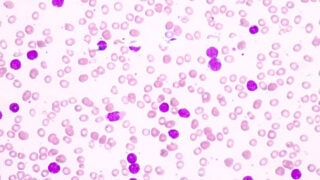Palliative care specialists focus on a patient’s quality of life
Precision in language is essential for team members working with people to help them live the best lives they can despite having a serious illness
At least 6 million Americans could benefit from palliative care, which seeks to improve the quality of life for patients living with illnesses such as cancer, heart failure and emphysema. And that number could double in the next 25 years as baby boomers age, according to the Center to Advance Palliative Care.
As medical director for palliative care at the Keck School of Medicine of USC, Sunita Puri and her team are called in by other physicians as specialists, often at a pivotal time for patients, family and doctors alike. A key question for the team: If a patient cannot be cured, what medical care will help them live the life they have left to its fullest?
“I define my job as being a quality-of-life doctor,” Puri said. “It’s a privilege to be allowed to come in and work with people to help them live the best lives they can despite having a serious illness.”
Compassionate care award
Puri’s work was recently recognized by the Keck School of Medicine, which made her this year’s co-recipient of the Etz Chaim Tree of Life Award of Compassionate Care.
Puri, who trained in internal medicine at the University of California, San Francisco and in palliative medicine at Stanford University, is also an accomplished nonfiction writer whose essays have appeared in The New York Times and Slate.
With her first book, a literary memoir, due in early 2019, she said it’s no accident that she chose her medical specialty.
Compulsive attention to language is so important in palliative medicine.
Sunita Puri
“I’ve had an obsession with the power of language for as long as I can remember. Compulsive attention to language is so important in palliative medicine. It’s not going in and asking, what do you want us to do for you. It’s shifting the conversation to, ‘Given where we are medically, what is most important to you? We can then match our medical plan to prioritize your goals.’ That’s a very different conversation.”
Even the term palliative care, she said, can be a linguistic hurdle for patients who conflate palliative care — which can come into play at any point during the process of a potentially terminal illness — with hospice care, a type of palliative care that eases a patient’s last six months of life.
“Many people think receiving palliative care services means they’re about to die,” Puri said. “Or they fear we’re going to come in and hasten people’s deaths, convincing them or their families to stop treatment. It’s a misperception that can prevent doctors from calling us in sooner and patients from being open to what we have to offer. And palliative medicine offers something really powerful — an entire team to help patients and families with physical, emotional and spiritual suffering.”
What is ‘better’ for palliative care patients?
One of the most important words she encourages patients to unpack is the word “better.” If they can’t be cured, what would constitute getting “better” in the time they have left?
Puri said that listening to how a patient hopes to get “better” is a huge part of her job.
“If you’re living with a cancer we can’t cure, does it mean being able to walk around or garden? Does it mean being strong enough to go to your daughter’s wedding? Tell me what better means, and we need to get really granular. The choices we make in death are as personal as those we make about life.”
Patients’ hopes vary widely. Some want to go home to die in bed, alone or among family. Others want anything but that — they’re wary of being a burden or tainting the family home with bad memories of their death in a room there. Some fear they’ll leave a curse or even a ghost after they’re gone. Some fear severe pain or difficulty breathing, and Puri and her team work diligently to ease their fears and their symptoms.
Puri said it’s important to be precise in defining patients’ hopes and fears, in order to match them to the realities of their lives and available care as best as possible. Patients may find the most peace dying in the hospital. They may choose to go home for what they’ve come to understand will be a very short time. Precision in the language of these conversations, she said, enables patients to decide the best available options for themselves.
“It also means that we physicians have to be precise in the guidance and recommendations we offer to patients who are wrestling with the reality of their illnesses,” Puri said.
The art and science of palliative care
To teach future physicians in all fields the art and science of palliative medicine, Puri established a fourth-year elective rotation in palliative medicine at Keck Hospital of USC and the USC Norris Comprehensive Cancer Center — in large part because a number of medical students lobbied for the creation of the rotation.
Students can spend two or four weeks rotating with Puri and her team, learning how to conduct sensitive conversations with patients and families about their goals of care, and learning to treat troublesome pain, shortness of breath, nausea and anxiety. They also spend time in the medical center’s first palliative medicine outpatient clinic, which Puri opened in January.
“The level of excellence of these students is consistently far beyond what I’ve encountered at other places,” she said, noting that most of the students she worked with this past year were awarded their first choice for residencies on Match Day in March. “As a group, they have a unique combination of humanity and compassion, intelligence and drive to be intellectually good doctors but with a huge heart. Having students like that on rotation gives me confidence they will serve their patients with a real understanding of this important work.”



